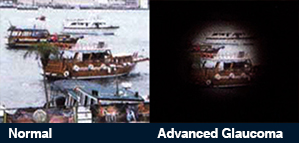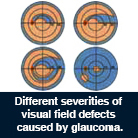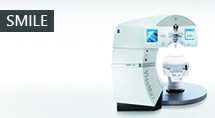Glaucoma

Glaucoma is usually caused by elevated intraocular pressure leading to visual loss.
When the drainage channels are blocked, fluid trapped inside the eye leads to elevated intraocular pressure. Such pressure damages the optic nerve fibres causing irreversible visual deterioration and ultimately blindness.
Glaucoma may be subdivided into chronic, acute, secondary and congenital
Chronic Glaucoma
This is the commonest type of glaucoma. At the early stage, only the peripheral visual field is affected, hence it is frequently overlooked. If it is uncontrolled, visual loss will eventually affect central vision.
The risk of chronic glaucoma rises with age, it usually develops in patients over the age of 35 and sometimes runs in the family.
During the early stages, patients with chronic glaucoma do not have any symptoms. When the intraocular pressures becomes high, patients may experience some aching in the eye with headache, hazy vision and halo when looking at lights.
The diagnosis of glaucoma requires clinical examination of the optic nerve heads, visual fields and intraocular pressures.
Chronic glaucoma can be treated and controlled. As it cannot be eradicated, observation and treatment are required for life. Permanent visual damage can be avoided if glaucoma is detected and treated early.
Acute Glaucoma

Acute glaucoma occurs when the aqueous drainage channels are blocked within a short period of time. Pressure inside the eye quickly builds up due to the trapped fluid. Symptoms may include aching pain in the eye, headache, blurring of vision, halo, nausea and vomitting. The immediate treatment is to reduce the intraocular pressure, after which treatment will be directed to manage complications such as recurrence and chronic glaucoma. The other eye will require medication or laser therapy to prevent similar glaucoma attack.
Secondary Glaucoma
Secondary glaucoma occurs in relation to other eye diseases, such as iritis, eye injury, mature cataract, prolonged steroid usage and diabetes. Treatments of both glaucoma and the underlying ocular diseases are required.
Congenital Glaucoma







